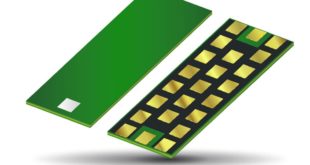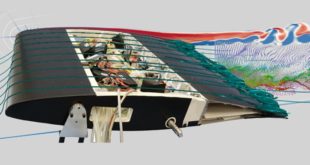DARPA has long recognized the critical role transistors play in Department of Defense (DoD) systems – especially radio frequency (RF) systems ranging from radar and communications to signals intelligence and electronic warfare. In the 1990s, the DARPA MIMIC program advanced Gallium Arsenide (GaAs) transistor technology that enabled the radar and …
Read More »Laser stabalization and tracking technologies for moving platform mounted Directed Energy Weapons (DEWs)
The drones have emerged as a major new threat to civilian infrastructure and military. Counter-drone technology, also known as counter-UAS, C-UAS, or counter-UAV technology, refers to systems that are used to detect and/or intercept unmanned aircraft. One of the attractive Anti-drone weapons have been directed energy weapons (DEWs) both of …
Read More »New product introduction (NPI) processes or program (NPD) insures manufacturability and conformance with the global supply chain
Every year there are huge trade shows where companies reveal all the latest new products in hopes to draw interest from distributors, dealers and prospective customers. There are Auto shows, Electronics shows and Agricultural shows just to name a few. Most manufacturing companies participate in one or more of the …
Read More »Researchers develop new manufacturing processes for ultra-thin and ultra-efficient solar cells
Photovoltaic solar cells are thin silicon disks that convert sunlight into electricity. These disks act as energy sources for a wide variety of uses, including: calculators and other small devices; telecommunications; rooftop panels on individual houses; and for lighting, pumping, and medical refrigeration for villages in developing countries. Solar cells …
Read More »DSO’s Make-It program on Synthetic chemistry enables end-to-end automated production of pharmaceuticals and other chemicals
Chemists who are trained in synthesis use their skills to create new forms of matter. They synthesize compounds not just because they are new: the design and preparation of these new compounds leads to numerous applications in pharmaceuticals, materials, detection, energy utilization and storage, and insights into biological systems. Synthesis …
Read More »DARPA RIDE to employ Automation and artificial intelligence to discover new Energetic materials and munitions are used across DoD
Energetic materials and munitions are used across DoD in mission critical applications such as rockets, missiles, ammunition, and pyrotechnic devices. In these applications, energetic materials and munitions must perform as designed to ensure success in both training and combat operations. Every time a gun fires, lead leaches into the air. …
Read More »DARPA GRIT program developing compact, tunable Gamma ray source for advanced accelerator technology, high-energy laser systems, and new x-ray and gamma ray detectors
Gamma rays are ionizing electromagnetic radiation, obtained by the decay of an atomic nucleus. Gamma rays are given off by stars, and by some radioactive substances. Gamma-rays travel to us across vast distances of the universe, only to be absorbed by the Earth’s atmosphere. Different wavelengths of light penetrate the Earth’s …
Read More »Countries developing Asteroid mining technologies
Early evidence suggests that there are trillions of dollars’ worth of minerals and metals buried in asteroids that come close to the Earth. These include phosphorus, antimony, zinc, tin, lead, indium, silver, gold and copper. The mining of resources contained in asteroids, for use as propellant, building materials or in …
Read More »Miniaturized RF passive components like filters, inductors and capacitors required for future 5G and IoT requirements
The RF design consists of passive as well as active components. The inductors, capacitors, and resistors are one of the three passive elements that are the foundations of all electronics. The discrete and passive components are an integral part of the design; from front-end antenna matching to tight-tolerance mixers, oscillators, …
Read More »New Smart Materials and technologies promise shape morfing devices from morphing Wings to robot swarms
Military have large demand for smart materials and devices including smart self-repair, smart clothing such as cloaking suits, and adaptive hull structures for ships. Morphing aircraft are multi-role aircraft that change their external shape substantially to adapt to a changing mission environment during flight. This creates superior system capabilities not …
Read More » International Defense Security & Technology Your trusted Source for News, Research and Analysis
International Defense Security & Technology Your trusted Source for News, Research and Analysis








